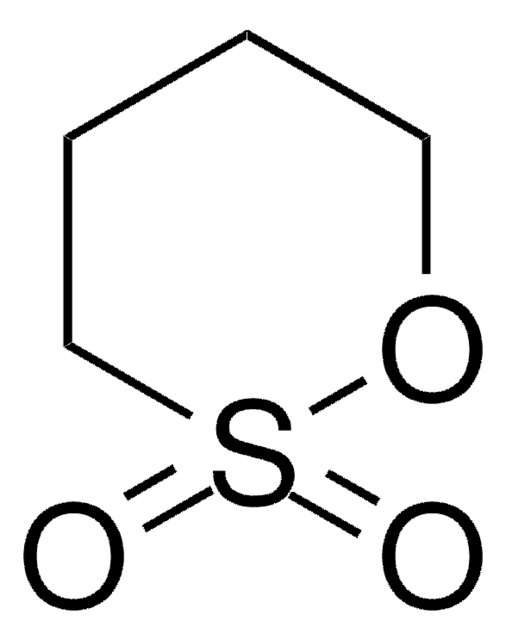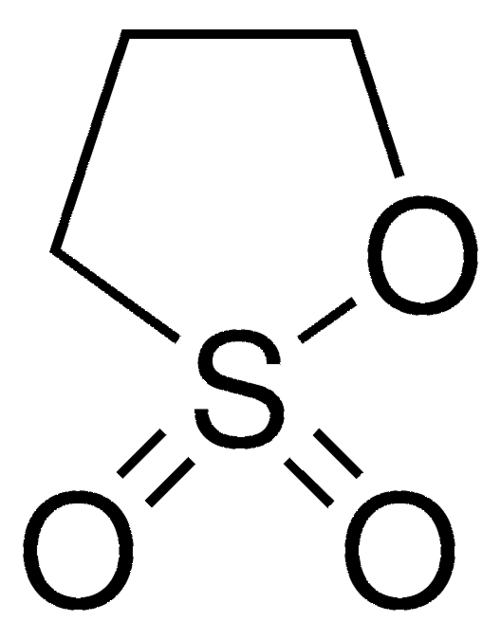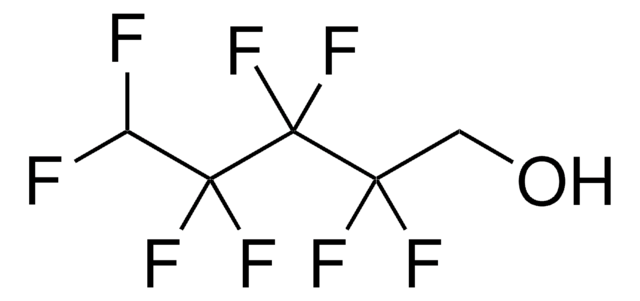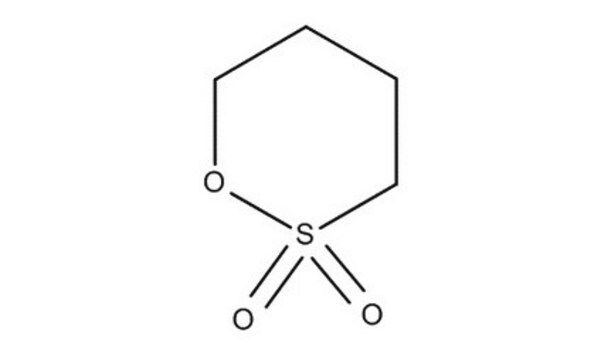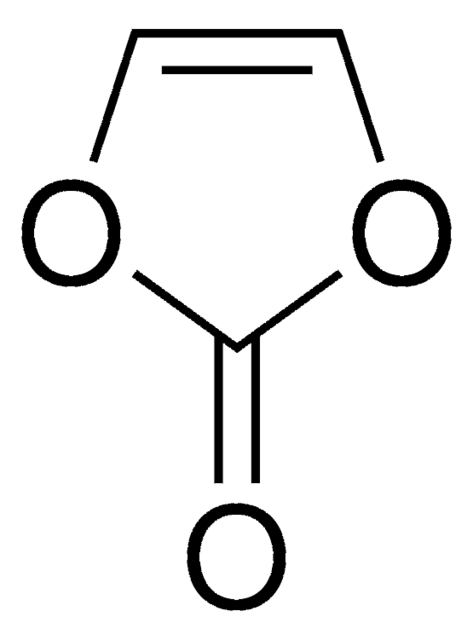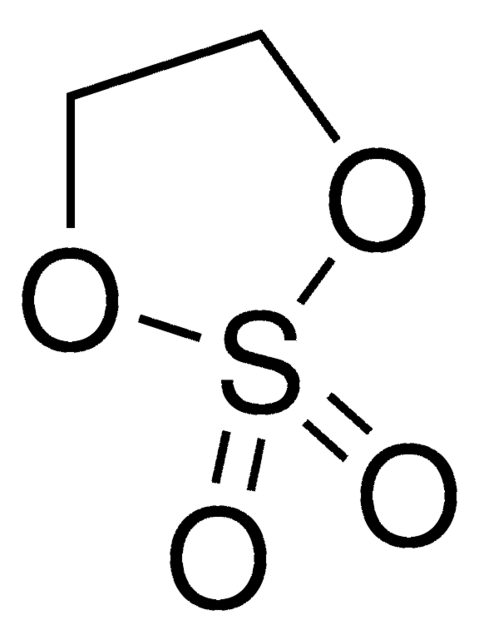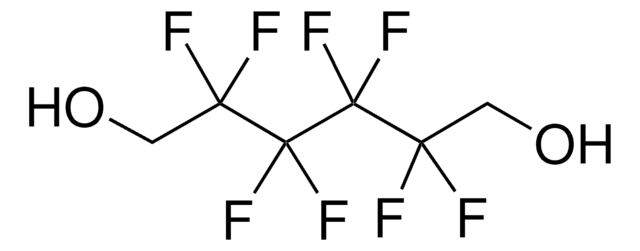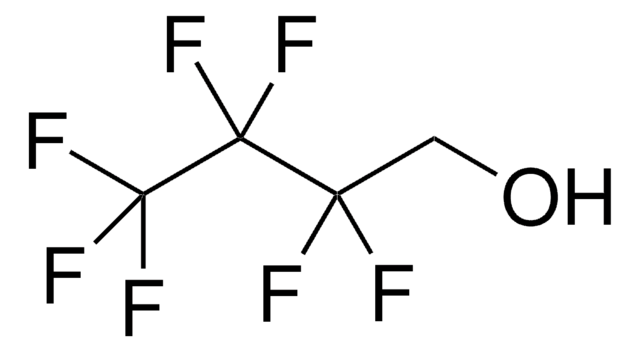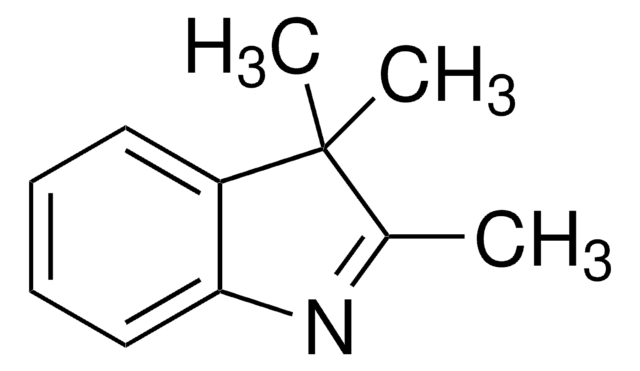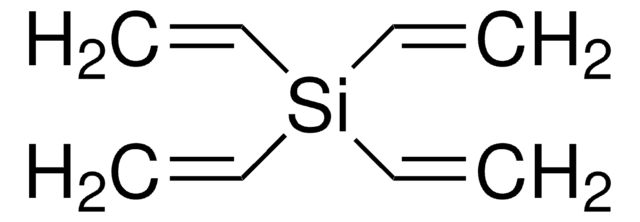291250
1,3-Propanesultone
≥99%
Synonyme(s) :
Acide 3-hydroxypropanesulfonique γ-sultone
About This Item
Produits recommandés
Essai
≥99%
pb
180 °C/30 mmHg (lit.)
Pf
30-33 °C (lit.)
Densité
1.392 g/mL at 25 °C (lit.)
Groupe fonctionnel
sulfonic acid
Chaîne SMILES
O=S1(OCCC1)=O
InChI
1S/C3H6O3S/c4-7(5)3-1-2-6-7/h1-3H2
Clé InChI
FSSPGSAQUIYDCN-UHFFFAOYSA-N
Vous recherchez des produits similaires ? Visite Guide de comparaison des produits
Application
- preparation of poly[2-ethynyl-N-(propylsulfonate)pyridinium betaine], a new ionic conjugated polymer
- preparation of novel poly(4-vinylpyridine) supported acidic ionic liquid catalyst
- preparation of poly((2-(dimethylamino)ethyl methacrylate)-co-3-dimethyl(methacryloyloxyethyl)ammonium propanesulfonate)-coated mesoporous silica nanoparticles
- sulfonation of surface of self-assembled nanoporous silica colloidal crystalline films comprised of 184nm-diameter silica spheres
Produit(s) apparenté(s)
Mention d'avertissement
Danger
Mentions de danger
Conseils de prudence
Classification des risques
Acute Tox. 3 Oral - Acute Tox. 4 Dermal - Carc. 1B - Eye Dam. 1 - Skin Irrit. 2
Code de la classe de stockage
6.1C - Combustible acute toxic Cat.3 / toxic compounds or compounds which causing chronic effects
Classe de danger pour l'eau (WGK)
WGK 3
Point d'éclair (°F)
340.7 °F
Point d'éclair (°C)
171.5 °C
Équipement de protection individuelle
Eyeshields, Faceshields, Gloves, type P3 (EN 143) respirator cartridges
Listes réglementaires
Les listes réglementaires sont principalement fournies pour les produits chimiques. Seules des informations limitées peuvent être fournies ici pour les produits non chimiques. L'absence d'indication signifie qu'aucun des composants n'est répertorié. Il incombe à l'utilisateur de s'assurer de l'utilisation sûre et légale du produit.
EU REACH SVHC Candidate List
EU REACH Annex XVII (Restriction List)
Faites votre choix parmi les versions les plus récentes :
Déjà en possession de ce produit ?
Retrouvez la documentation relative aux produits que vous avez récemment achetés dans la Bibliothèque de documents.
Les clients ont également consulté
Notre équipe de scientifiques dispose d'une expérience dans tous les secteurs de la recherche, notamment en sciences de la vie, science des matériaux, synthèse chimique, chromatographie, analyse et dans de nombreux autres domaines..
Contacter notre Service technique